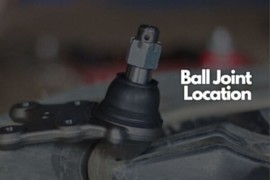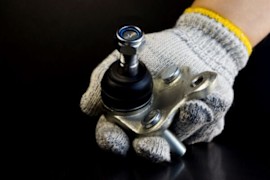{
"lazyNodes": false,
"abFitnotesFlag": false,
"abCrawlReviews": false,
"productOptionsCookie": false,
"orderDelayFlag": false,
"skipSessionCookie": false,
"covidMessage": false,
"fullTitleCookie": false,
"nrLoggerCookie": false,
"checkoutReviewCookie": false,
"productOptionSeqCookie": false,
"maintenanceFlag": false,
"bufferETACookie": false,
"multiShippingDiscountFlag": false,
"newFitmentFlag": false,
"surveyOptInFlag": false,
"crossSellFlag": false,
"skuMappingFlag": false,
"paySplitCookie": false,
"callDisableFlag": false,
"zipPaymentFlag": "u",
"hassleFreeReturn": false,
"lifetimeReplacement": false,
"cpn_off": false
}Need Help? Call Us1-866-529-0412
2003 Mazda Protege
2003 Mazda Protege Ball Joints
Refine by:
Shop Catalog
Showing 1 - 1 of 1 results
Sort by:
Part Number: MOK500343
Guaranteed to Fit
$40.49
Vehicle Fitment
- 2003 Mazda Protege ES All Engines
- 2003 Mazda Protege LX All Engines
- 2003 Mazda Protege DX All Engines
- 2003 Mazda Protege SE All Engines
- 2003 Mazda Protege Mazdaspeed All Engines
Product Details
Location : Front, Driver or Passenger Side, LowerType : Non-GreasableQuantity Sold : Sold individuallyWarranty : Lifetime Moog limited warrantyProp 65 Warning :
![]() WARNING: This product can expose you to chemical which is known to the State of California to cause cancer and birth defects or other reproductive harm. For more information go to www.P65Warnings.ca.gov.
WARNING: This product can expose you to chemical which is known to the State of California to cause cancer and birth defects or other reproductive harm. For more information go to www.P65Warnings.ca.gov.
Page 1 of 1 | Showing 1 - 1 of 1 results
Popular Products

MoogFront, Driver or Passenger Side, Lower Ball Joint, Problem Solver SeriesManufacturer #K500343
( Reviews) Questions, Answers
MOOG PROBLEM SOLVER BALL JOINT
Steer smooth and steady with the innovative, ultra-durable design and prolonged performance promised by MOOG’s Problem Solver ball joint. Established in 1919, MOOG is a leading developer of steering and s...
Product Questions & Answers
Q:what size is this bolt?
morgan
A:BEST ANSWERHi Morgan, thank you for reaching out. We do not have the information regarding the exact size of the bolt for this item. The measurement is similar to the original part, and the fitment selection is guaranteed by simply entering the complete vehicle information. You can use this link to continue ordering this part at a discounted price today: https://www.carparts.com/ball-joint/moog/mok500343?can=CPAP3648_CSQA_20230702
I hope this helps. Enjoy shopping. Show less
Aldrin P.
1 Question, 1 AnswerView all Q&As >
Related Parts
Helpful Automotive Resources
Where Are the Ball Joints Located?Many vehicles typically have an upper ball joint and a lower ball joint unless they have strut suspension with a bearing on the top of the strut. These only have a lower ball joint. However, some strut suspension systems (like Hondas and some Fords/Lincoln platforms) still have two ball joints.
Diagram
How to Fix Rattling in Your Tesla Model 3One of the most common causes of rattling in the Tesla Model 3 is a footwell that’s come loose or hasn’t been installed properly. The footwell refers to the space beneath the steering wheel. More often than not, the rattling is caused by the upper panel of the footwell coming
Ball Joint Replacement Cost: What You Need To KnowBall joint replacement can take anywhere from one to three hours. If you can get a packaged deal for multiple ball joint replacements from one shop, it might save you some labor costs.
What Are Car Ball Joints?
Chassis Lubrication: Why, When, and How to Grease Your Car ChassisWhile a visual inspection will help you determine which parts need lubrication, the following components can always use the extra grease:
End-links
Ball Joints (when there are grease fittings; some don’t have them)
King pins (mostly on pre-1997 Ford I-Beam axle pickups)
Inner and outer tie rod ends (note: inner tie rod ends are
Stiff Steering Wheel: Common Causes and How to Prevent ItMisaligned wheels lead to numerous problems – stiff steering wheels included. They can cause uneven tire wear, making the vehicle veer towards one side when driving. This leads to stiff and heavy steering because the tires are constantly pulling your vehicle toward a certain direction.
Power Steering
Causes of Excessive Play on the Steering Wheel, ExplainedExcessive play refers to when the steering wheel feels loose. It typically forces the driver to overcompensate while steering to maintain trajectory. If your vehicle has excessive play, you need to stay vigilant and make constant corrections to avoid spinning out of control.









